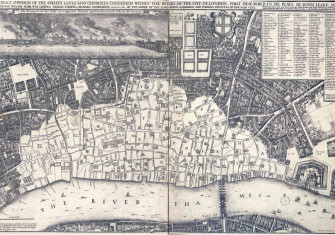
The Map: Tenochtitlan, 1524
Kate Wiles provides context for the first European image of the Aztec capital, razed by the Spanish in 1521.
The capital city of the Aztec Empire, Tenochtitlan was founded in the early 14th century. Built across a series of natural and artificial islands connected by causeways in the swamps of Lake Texcoco, it was to become one of the largest cities in the world, covering more than five square miles and with a population of perhaps 200,000. At its peak it was immensely wealthy, architecturally grand, colourful and full of life. Having only arrived in 1519, the Spanish had razed the city by 1521. Mexico City, capital of the viceroyalty of New Spain, grew up in its place.
This map, published in Nuremberg in 1524 along with copies of Hernán Cortés’ letters to Emperor Charles V translated into Latin, was the first image seen in Europe of Tenochtitlan, presented under the Habsburg imperial flag. It has been suggested that this, originally, was based on an indigenous map of the city and thus reflects the inhabitants’ own view of it, before being adapted into a woodcut by European craftsmen. Despite being highly stylised, the general design reflects what is known of the layout of Tenochtitlan.
The map is oriented with south at the top. In the centre of Tenochtitlan is the ceremonial precinct, with two towers – the twin sanctuaries to Tlaloc and Huitzilopochtil – framing the rising sun above the Great Temple. Surrounding the ceremonial precinct are the royal palaces, further temples and houses, canals and trees, divided into quarters by four roads. On the left is a representation of the Gulf of Mexico, with Florida on the left and the Yucatan, represented as an island.






